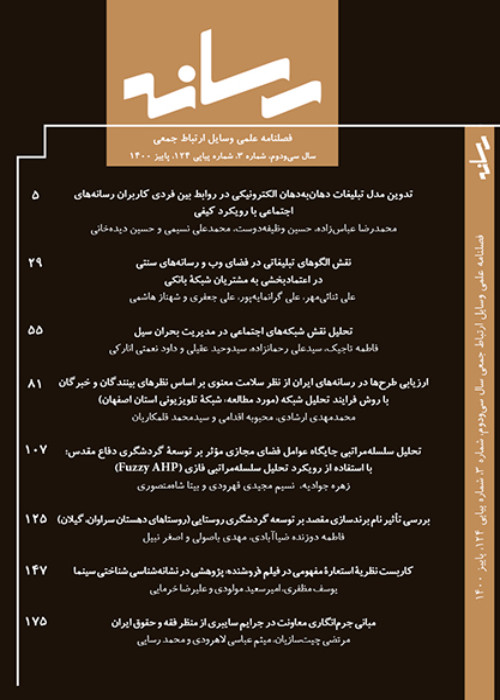Semiotic Analysis of " Mohammad the Messenger of God"
Author(s):
Abstract:
Representation of images of holy personalities in movies has taken place in different ways from the beginning till now. Thinking about the evolution of this issue, it can be realized that in line with the change in attitudes and spiritual and rational approaches of producers of these works, the status of holy personalities has also changed in their viewpoints and consequently representation of holy figures in movies has undergone changes. At present with respect to the interest shown by Muslim nations in production of movies with religious themes, the mechanism of representing prophets of monotheistic religions in movies has been attached special importance because on the basis of certain religious prohibitions any kind of depiction of the Prophet of Islam (PBUH) and his infallible household should be avoided. For this reason, dealing with the issue of representing Islamic holy personalities in movies, where depicting them is the main factor, has faced important and complicated challenges. Scrutinizing the produced movies in this respect and reviewing the level of depiction made in them in proportion with the spiritual status of religious noblemen and simultaneously avoiding their direct and complete depiction can reduce obstacles existing in this field and pave the way for producing movies based on reproduction in proportion with their divine status. Reviewing the history of depiction of the image of Prophet of Islam (PBUH) in movies, this paper provides a semiotic analysis of “The Message: the Story of Islam” or “Mohammad, the Messenger of God” as the most important film that focuses on the prophet’s life. On the basis of semiotics literature, the semiotic analysis of chosen scenes of this film reviews each scene in the paradigmatic and syntagmatic axes in order to decode that scene. On this basis, it is shown how the director of the movie has devised provisions in writing the screenplay, the mechanism of filming and using music symbolically by applying various symbols and codes so that while representing the holy Prophet of Islam (PBUH) with a purifying approach he would avoid representing a physical image of the Prophet.
Keywords:
Language:
Persian
Published:
Rasaneh, Volume:25 Issue: 3, 2014
Page:
29
magiran.com/p1337280
دانلود و مطالعه متن این مقاله با یکی از روشهای زیر امکان پذیر است:
اشتراک شخصی
با عضویت و پرداخت آنلاین حق اشتراک یکساله به مبلغ 1,390,000ريال میتوانید 70 عنوان مطلب دانلود کنید!
اشتراک سازمانی
به کتابخانه دانشگاه یا محل کار خود پیشنهاد کنید تا اشتراک سازمانی این پایگاه را برای دسترسی نامحدود همه کاربران به متن مطالب تهیه نمایند!
توجه!
- حق عضویت دریافتی صرف حمایت از نشریات عضو و نگهداری، تکمیل و توسعه مگیران میشود.
- پرداخت حق اشتراک و دانلود مقالات اجازه بازنشر آن در سایر رسانههای چاپی و دیجیتال را به کاربر نمیدهد.
In order to view content subscription is required
Personal subscription
Subscribe magiran.com for 70 € euros via PayPal and download 70 articles during a year.
Organization subscription
Please contact us to subscribe your university or library for unlimited access!


